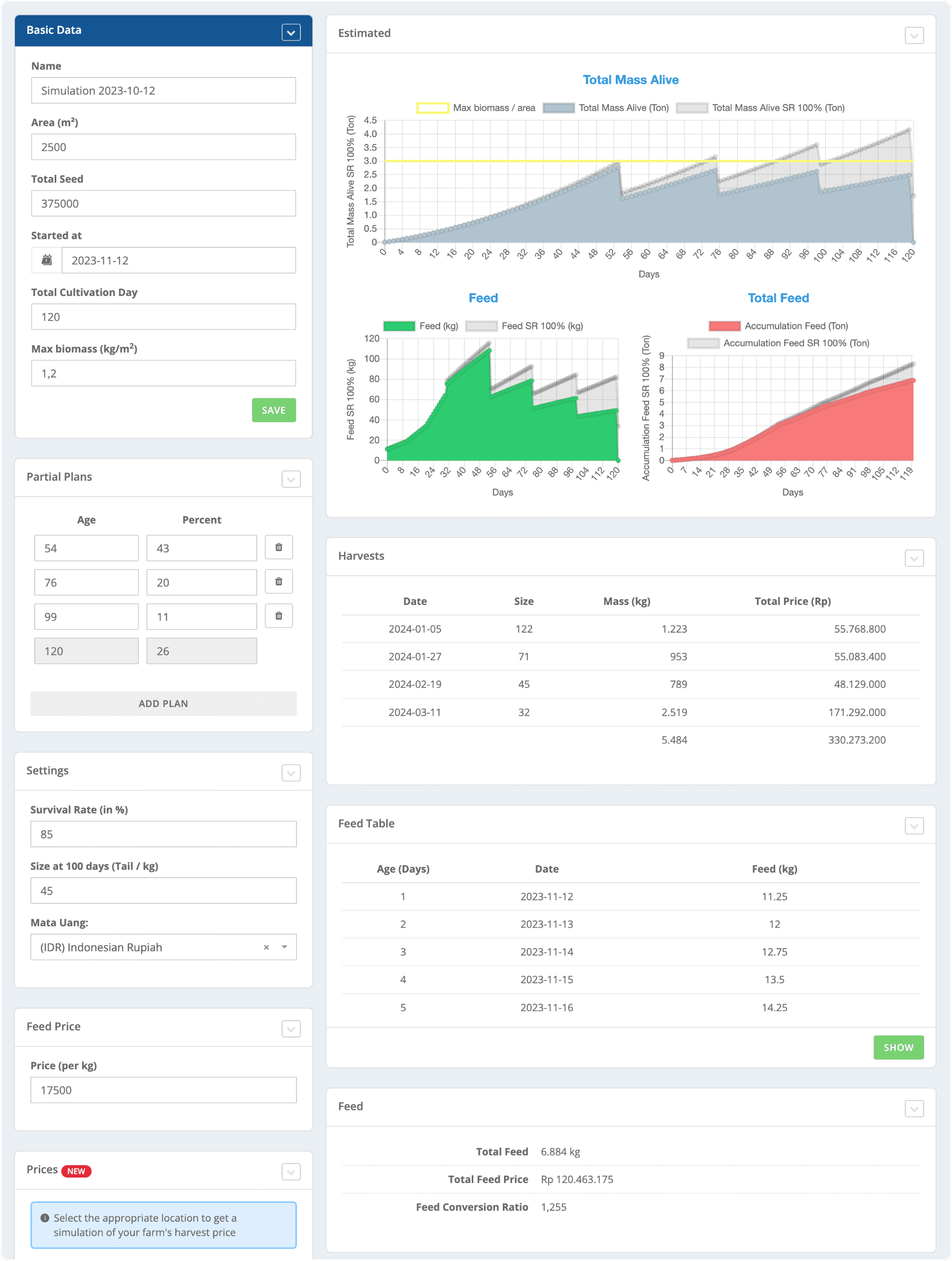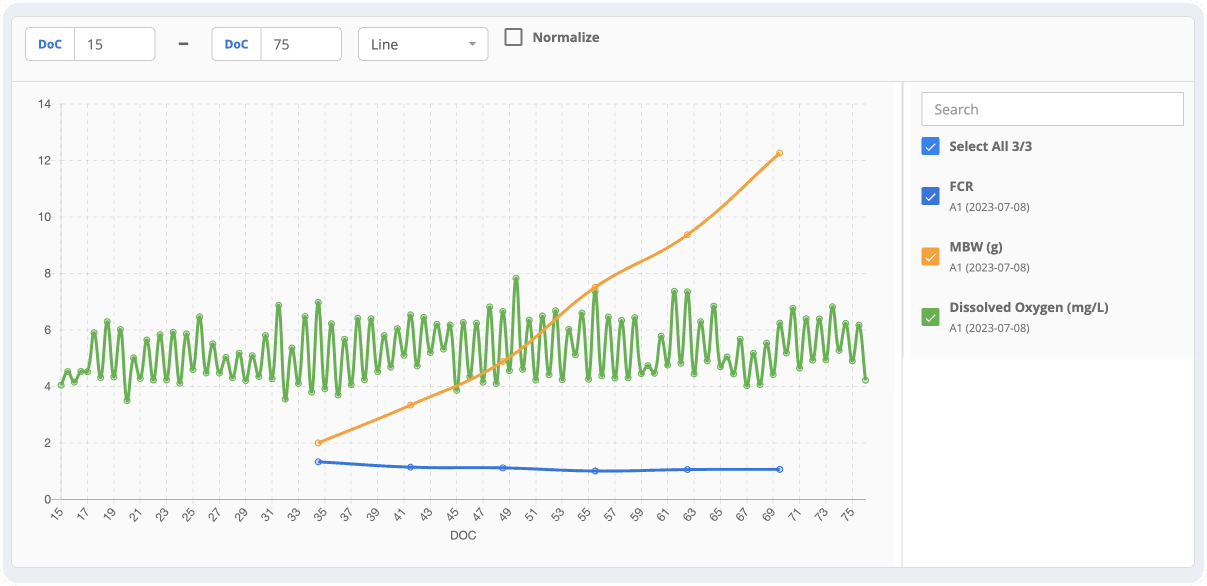
Efficiency is one of the keys to achieving success in shrimp farming. It is important for cultivation operations not just to run productively, but also efficiently.
From an economic perspective, efficiency is determined by the farmer's ability to transform production factors to achieve maximum production levels (Farrell, 1957 in Jusmiaty et al., 2017). Existing resources need to be allocated properly in operational activities to make cultivation run efficiently.
Parameters to measure cultivation efficiency
Feed is the component with the largest operational costs in cultivation, covering 50-70% of the total production costs in each cycle. Thus, production and feed costs need to be monitored so that farmers can make better decisions and prevent losses.
An effective feed management will support efficient cultivation and prevent production costs from rising. Therefore, feed conversion ratio (FCR) is an important parameter related to the efficiency of feed management and cultivation. FCR needs to be maintained and monitored to ensure that it remains within the desired range, or 1.1-1.2. To obtain the FCR value, divide the amount of feed used during cultivation by the biomass.
Overly high FCR can be detrimental to the cultivation process, hence, try as much as possible to keep the value stable and within the ideal range. Farmers can attempt to maintain water temperature, control feeding to avoid overfeeding, consider the number of paddle wheels and their strength to adjust the amount of oxygen, and place paddle wheels at the proper spots to ensure that the feed is evenly distributed.
In this case, water quality is also a factor related with feed management and shrimp growth. Excessive feed can cause the accumulation of organic waste in the water. This will disrupt the stability of water quality and cause a negative impact on shrimp.
Dissolved oxygen (DO) and water temperature are two water parameters that impact feeding. When the DO is too low or less than 4 ppm, the shrimp's appetite will decline. Meanwhile, temperatures that are less than optimal or outside the range of 26°C-32°C can affect shrimp eating behavior. Therefore, the amount of feed that should be given to shrimp needs to be adjusted to the water quality conditions.
Using JALA App Simulation Feature to estimate cultivation efficiency
The good news is, JALA is ready to help you measure cultivation efficiency through the Simulation Feature on JALA App. With the Simulation Feature, you can review feed projections, biomass, and harvest before starting your cultivation.

The feed projection information that you get includes a chart of feed consumption at each DoC, the costs you will spend, FCR values, and a daily feeding table. Then, on the biomass projection page, you will get information on the total biomass in each DoC in the form of a chart and table. Additionally, you can monitor biomass projections and total harvest prices on the harvest simulation page. Make sure to fill in the simulation data completely to ensure that the information you get is accurate.

In addition, you can analyze cultivation progress based on the actual data with the analysis chart in JALA App. This chart will help you monitor farm conditions comprehensively and you can use it as an evaluation material.
To use the Simulation Feature and check the analysis chart to make your cultivation more efficient, download the mobile version of the JALA App via Google Play Store or App Store. It’s free!
References
Farrell, M. J. (1957). The Measurement of Productive Efficiency. Journal of the Royal Statistical Society, 120(3), 253-290. https://doi.org/10.2307/2343100 in Jusmiaty, Tuwo, M. A., & Bahari, B. (2017). Efisiensi Usaha Budidaya Udang Vanname. Jurnal Sosio Agribisnis, 2(2), 37–47. https://doi.org/dx.doi.org/10.33772/jsa





